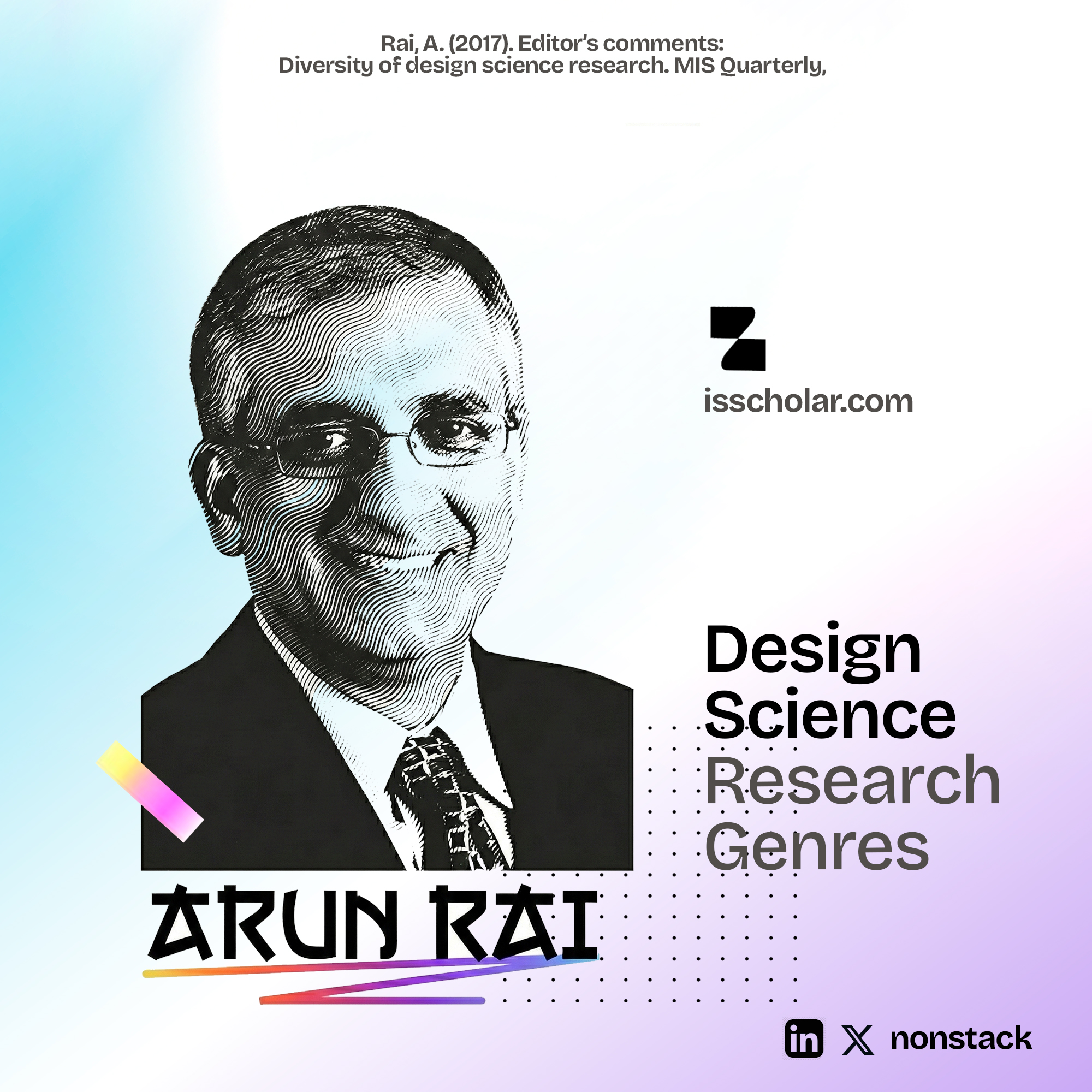Attending ICIS presents a rare opportunity for doctoral students to meet some of the most influential scholars, editors, and collaborators in the Information Systems community, but these moments are often fleeting. Whether it’s a hallway encounter, a coffee-line conversation, or a spontaneous introduction after a panel, the ability to deliver a clear, compelling, and memorable research pitch can determine whether a quick chat turns into a meaningful connection. The “elevator pitch”—a concise three-minute window to convey enthusiasm, impact, and intellectual depth, is therefore not just a communication skill but a strategic tool for visibility and collaboration. Drawing on the insights of Professor Varun Grover, one of the most cited scholars in IS, the following guide translates years of observation into practical advice for crafting an elevator pitch that resonates, persuades, and opens doors at ICIS.
The effective research pitch, often called the “elevator pitch” (typically 3 minutes or less), is a critical skill for doctoral students seeking to navigate short, opportunistic temporal spaces to communicate their work and impress important people. The following details provide a comprehensive guide to constructing an impactful research pitch.
The goal of the pitch is to open a dialogue with strangers in the same field to explore potential shared research interests. Effective pitches resonate by combining the ability to communicate enthusiasm, impact, and knowledge.
I. General Structure and Guidelines
While many pitches focus on dissertations—often in interview settings responding to the generic question, “what are you working on?”—these guidelines apply to any research presentation.
The effective research pitch is divided into three distinct yet connected parts:
- 1. The Preamble: Motivation and research question.
- 2. The Hard Work: Review, theory, data/method/analysis.
- 3. Takeaways: What you have/can learn.
It is crucial to link these three parts so they “tell a story” and do not appear disjointed. The hard work should logically connect to the preamble, and the takeaway must be a derivative part of the preamble and emerge from the hard work.
——————————————————————————–
II. Detailed Breakdown of the Pitch Components
A. The Preamble
The Preamble sets the stage for the research and its relevance.
| Critical Success Factor | To communicate that the topic is something to care about personally and/or societally. |
| Effective Execution | The research question must be converted into a practical problem or a dilemma. The speaker should convey enthusiasm, communicating that the problem is real, that they care about it, and that others should care too. This involves putting yourself (and the listener) in the shoes of the target subject of the research (e.g., the small e-retailer). |
| Poor Example | Starting with complex theoretical terminology that fails to convey any reason for studying the topic. For instance: “I am studying network externalities in multi-platforming due to different risk profiles of e-retailers.” This is technically correct but lacks resonance. |
| Better Example | Framing the dilemma: Starting by asking how a small business can be found on the internet and then presenting the inherent risks (like relying on big platforms, losing control, or facing competition) that lead to the multi-platform vs. single-platform trade-off, concluding: “We study these tradeoffs and try to help resolve this dilemma”. |
B. The Hard Work
This section must communicate the depth of the work without getting bogged down in detail, recognizing the information asymmetry between the researcher and the recipient.
| Critical Success Factor | To communicate simply, communicating depth of your work without going into depth. |
| Effective Execution | Do not assume much knowledge. When describing theoretical or methodological contributions, “spoon feed” the information using contrasts that accentuate your contribution. The short pitch should communicate that depth and due diligence exist behind the research, even if the complex research model is only broadly framed. |
| Theory & Review | Highlight where prior studies fall short (e.g., they used one dominant theoretical perspective X, which fails to consider certain aspects) and explain how your work integrates multiple perspectives to cover all facets of the phenomena. Position the work based on its novel perspective. |
| Methodology & Data | Highlight key methodological innovations. Describe the effort involved in data collection without elaborating on the specific analysis in great depth (e.g., “data integrated from secondary sources and web-scraping analyzed”). The essential value statements of the research are more important than the process details. |
| Poor Example | Using extensive jargon and listing techniques without contextualizing them: “I use theories risk diversification, network externalities and complementarities to study e-retailer multi-platform behavior. I scraped data on 2000 e-retailers and ran finite mixture model econometric models to study this.” This conveys complexity but is ineffective. |
C. Takeaways
The takeaways convey the return on investment of the project.
| Critical Success Factor | To communicate your return on investment in the project by cherry picking the most interesting findings. |
| Effective Execution | Communicate what was learned and how it is broadly useful, linking back to the societal or personal relevance established in the Preamble. The speaker has discretion to cherry-pick a key finding that is interesting, surprising, or exciting, and detail its implications. |
| Ineffective Method | Sequentially going through every hypothesis (e.g., five hypotheses) and indicating if each was supported or not. |
| Effective Method | Highlight one or two findings that have strong implications for the dilemma raised earlier, showing how they help resolve the problem. This process effectively “closes the loop” on the problem studied. |
| Effective Example | Providing direct, actionable guidance: “I found that e-tailers who need to decide on whether to list their products on multiple platforms, should do so, particularly if their product is unique and each platform is accessing unique markets. If these conditions do not hold then a single platform would be better for them”. |
——————————————————————————–
III. Contingencies and Delivery Style
Adjustments to the pitch may be necessary depending on the audience and the stage of the research.
A. Stage of Research Completion
| Stage of Completion | Relevant Pitch Components |
| Starting out | Just the Preamble |
| Post-proposal | Preamble and the Hard Work |
| Finished | All three parts (Preamble, Hard Work, and Takeaways) |
B. Multi-Essay Dissertations
• Interlinked Essays: Pitch at the broader program level, highlighting the broad preamble and the sub-questions that form each essay. Overview the approaches followed in each essay and sample one or two broader takeaways or specific takeaways from each essay.
• Distinct Essays: Focus the entire pitch on one specific essay (the most developed or consequential one), clearly indicating early on that the pitch covers only one essay of the dissertation.
C. Audience Variations
• Interview Setting: Tailor the pitch to what the interviewer is looking for, potentially connecting the research to the interests of the faculty at that institution as a brief extension.
• Informal Setting: A shorter version may be appropriate, focusing more heavily on the Preamble and the Takeaway.
D. Delivery
Practice the pitch dozens of times to ensure flow and connectivity between the three parts. However, the live pitch must not appear hurried or excessively rehearsed; it should come across as natural. Ultimately, the goal is to communicate the project in an interesting way that will impress the listener regardless of their specific interest in the topic
IV. Why Elevator Pitches Matter at ICIS
At ICIS, every conversation is a potential collaboration. A hallway chat could lead to a co-authorship; a casual question after a panel might spark mentorship; a lunch-table discussion could evolve into a dissertation breakthrough. But in these short, unpredictable encounters, clarity and connection matter more than complexity. The effective pitch helps you seize these “micro-opportunities.” It gives you the structure and confidence to turn curiosity into dialogue—allowing you to be remembered long after the conversation ends.
V. The Psychology of Attention
Before perfecting your structure, understand why some pitches resonate more. Listeners remember what captures both emotion and logic:
- Primacy effect: People remember what they hear first.
- Emotional contagion: Passion is contagious; your excitement invites theirs.
- Simplicity bias: Listeners reward clarity over complexity.
In short, people won’t remember every detail of your research—but they will remember how your enthusiasm made them feel about it.
VI. The “Three Es” Framework
A simple way to remember the flow of an effective pitch:
- Engage – Open with a relatable hook that creates curiosity.
- Explain – Clarify your contribution or what makes your approach unique.
- Envision – End with how your research changes or advances something that matters.
This complements Grover’s structure by adding emotional rhythm and memorability.
VII. Common Mistakes to Avoid
Many otherwise strong pitches fail because they lose connection. Avoid:
- Jargon overload.
- Starting with theory before motivation.
- Rushing or reading verbatim.
- Ending without a “so what?” moment.
A great pitch isn’t an academic defense—it’s an invitation to conversation.
VIII. Delivery and Body Language
Your pitch is performance, not prose. Communicate with both voice and posture:
- Stand tall and relaxed.
- Make consistent eye contact.
- Use hand gestures purposefully to highlight structure (“first… second…”).
- Smile and vary tone to show enthusiasm.
- Pause occasionally—silence signals confidence.
IX. Adapting the Pitch to ICIS Scenarios
| Setting | Goal | Strategy |
|---|---|---|
| Doctoral Consortium | Impress senior scholars and mentors | Highlight clarity, theoretical contribution, and fit within IS. |
| Poster Session | Capture quick attention | Lead with a strong one-sentence problem statement. |
| Reception or Hallway Conversation | Build rapport | Use an informal, story-driven version. |
| Job Market Interviews | Demonstrate depth | Include all three components—motivation, work, and takeaways. |
Example:
When you meet a senior scholar after their panel, start by acknowledging their work: “Your point on digital autonomy resonated with my research on agentic AI adoption…” Then segue into your brief summary. This small connection personalizes your pitch and opens a genuine dialogue.
X. Preparation Checklist for ICIS
✅ Craft three versions of your pitch—30-second, 90-second, and 3-minute.
✅ Practice with peers and time yourself.
✅ Record and review your delivery.
✅ Prepare one thought-provoking follow-up question.
✅ Carry a QR or call card linking to your research page (e.g., ISResearcher.com).
✅ End with an open invitation: “I’d love to hear your thoughts on this.”
XI. Example: A 90-Second Elevator Pitch (Agentic AI Adoption)
“I study how professionals adopt generative AI tools not as one-time decisions but as evolving sequences of experimentation. Using event-series data from 21 mid-career professionals, I identify three distinct adoption paths—Mandate-with-Guardrails, Self-Propelled Exploration, and Show-and-Tell Diffusion. Each reflects a different rhythm of how AI becomes part of human work. This matters because organizations often treat AI adoption as a yes/no choice, but my research shows it’s a process of learning, reflection, and redesign. In short, I study not whether AI is adopted—but how it becomes human.”
XII. Closing Reflection: The Pitch as Academic Identity
Your elevator pitch is not just a conference script, it’s your academic fingerprint. It communicates your curiosity, rigor, and contribution in a way that others remember. Over time, refining your pitch will sharpen your clarity in abstracts, presentations, and even publications. At ICIS, opportunities emerge in seconds; the question is whether you’ll be ready to tell your story when they do.
Reference
Grover, V. (n.d.). Making an impression with your research pitch. Walton College of Business, University of Arkansas, Fayetteville, AR, United States.










Leave a Reply